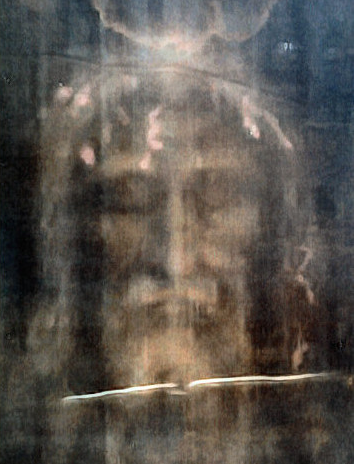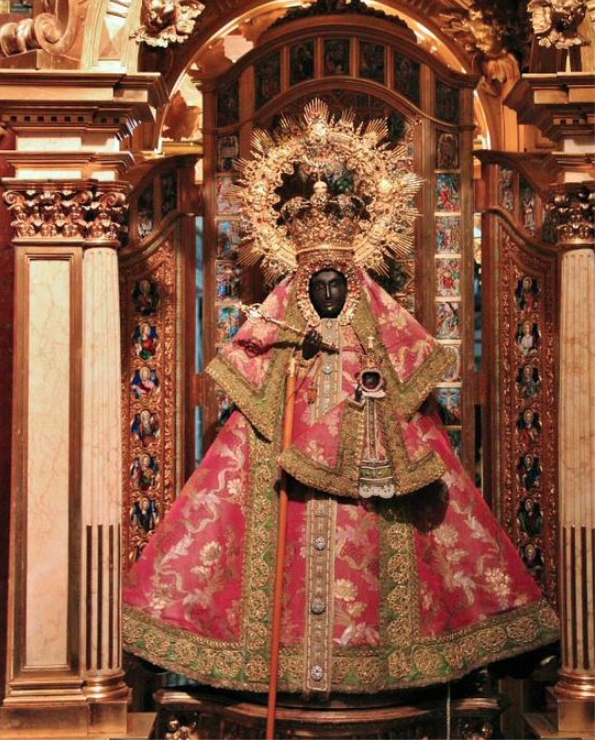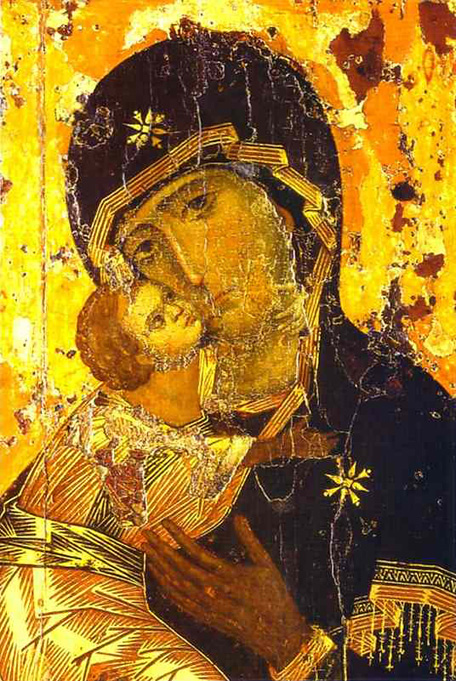Introduction:
If the face on the Shroud of Turin is that of Jesus, it would
be interesting to compare it to the face of Mary on Luke's statue and icon to
determine if it has the same genetics.
The electromagnetic image on the Shroud of Turin could be considered to
be a photo which would accurately display the face that
caused the radiation.
The statue seems to be of high quality, so Luke must have
been talented. In that case, one would expect that the
genetics of Mary's face would be accurately portrayed in part.
Yet, the icon is probably a more accurate image of Mary.
It is easier to paint than carve.
From the Bible, we know that Luke never saw Jesus, because
Luke became a Christian when he started to follow Paul in
Acts. On the other hand, we know that Luke interviewed
Mary to get the Christmas Narrative that is in Luke's
Gospel. So Luke saw Mary.
|
History of the Shroud:
Legend has the Shroud of Turin originating in Jerusalem
and traveling to the region of Edessa, Constantinople, or
both.
The Shroud enters history in 1354 and was moved to Turin
in 1578.
In the last 130 years, a number of attempts have been made
to declare it real or a fraud.
It seems that the image was formed as a photographic
negative with 3D information. No paints were used. This
sort of thing would have been hard to pull off in the
Middle Ages. Indeed it probably can't be done with what we
have today.
However, carbon dating was to the middle ages, but those
results were never verified with a second experiment.
During the middle ages, the shroud was nearly lost in a
fire, and the damage was repaired with patches. Some say
the samples for the carbon dating was taken from the
patches.
The cloth has pollen from Jerusalem, Edessa, and Turin, so
the pollen story matches the legend.
|
History of the Statue:
According to tradition, St. Luke interviewed the
Blessed Virgin for the Nativity account of his gospel. At this time, he
also carved a statue and painted an icon of her holding
the infant, Jesus.
The statue was made of unstained oriental wood (cedar).
The statue was housed in the Basilica of St. Mary Major
which is in Rome.
St. Gregory the Great paraded the statue through Rome in
542 to end a plague.
After the plague was over, Gregory sent the statue to
Saint Leander, Bishop of Seville, in gratitude for
converting the Visigothic kings.
In 711, the Moors invaded the Iberian Peninsula (present
day Spain). The Moors were Muslims, who had a reputation
for destroying sacred artifacts of other religions. So,
the statue was hidden in a cave whose entrance was hidden.
The statue remained hidden for more than 600 years, while
the Muslims ruled Spain. By 1326, the Muslims were driven
from the part of Spain where the statue was hidden.
After the Muslims, it took Mary's intercession to find the
statue, because no one knew where it was.
|
History of the Icon:
In the Eastern Church, St. Luke is the original
iconographer, because from tradition, he painted the
original icon which was a picture of Mary holding the
infant Jesus.
That icon was held in a monastery near Constantinople, but
it was lost at about the same time the Muslims invaded
Greece.
However, it was replicated by many artists before it was
destroyed, and the icon called, Our Lady of Vladimir, has
the reputation of being one of the most accurate.
In the Western Church, a common painting among many
artists was the scene of St. Luke painting Mary. Luke
became the patron saint of artists (among other things),
and many art guilds were name after St. Luke.
It would seem that the original icon was painted on a
board, because that is what was in use at that time. Yet,
there seems to be many images of the icon, so it is
difficult to say, with any certainty, whether any of them
are images of original. Indeed, the existence of the
original can't be verified.
On the other hand, nearly all the legend traces back to
St. Luke which would seem to make a case that there is
some accuracy in saying that he painted an image of Mary.
In most of these stories, these artifacts (statues and
paintings), travel from the Holy Land to Greece as the
first step. Remember, the shroud has pollen that verifies
that journey. While the story of the icon can not shown to
be true, the legends have enough consistency to suppose
that something is behind it.
Some might argue that Luke would not have done both a
statue and a painting, but for many centuries, it has been
common practice for sculptors to make a painting of what
they are going to carve.
It could also be argued that making Luke a writer, artist,
and physician, is putting too much talent into one person.
However, at that time, none of these skills were that hard
to master. For example, the statue does not rise to
medieval standards. By then, a good artist was much more
practiced than those who created art a thousand years
before them.
So it seems that one icon was painted, and then copies
were made from the original one. The original icon was
probably lost. The copies usually have the same face with
embellishments to the clothing to fit a certain culture.
|
Shroud of Turn:
This is the face on the Shroud of Turin.
|

|
Statue of Mary:
This is the statue of Mary that was reportedly made by St. Luke.
|

|
Icon of Mary:
This is the icon that from tradition, St. Luke
painted of Mary.
|

|
Genetic Similarities:
Do you notice how the genetics of Mary, in the statue and
icon, are the same as that of Jesus on the shroud? They
both have the same long nose, narrow mouth, and chin. The
cheeks and forehead could either be the same of slightly
different.
It would seem to me that they are closely related.
The resemblance between the shroud, statue, and icon go a
long ways towards supporting the legends of these relics.
It is also probably the best guess of what Jesus and Mary
looked like while they live among us.
|
Lack of Aging:
Neither Jesus nor Mary show any signs of aging which is an
indication that they do not have sin. For her part, Mary
would be pretty old. She had to be at least 46 (but maybe
50) at the time of the Resurrection. St. Luke didn't join
Paul and make it back to Jerusalem for at least another 8
(but maybe 40) years after that. So Mary would be between
54 and 90 years old, but she looks like she is 20. That
would make a strong case for her Assumption into Heaven.
She obviously was not going to die of old age.
|
|